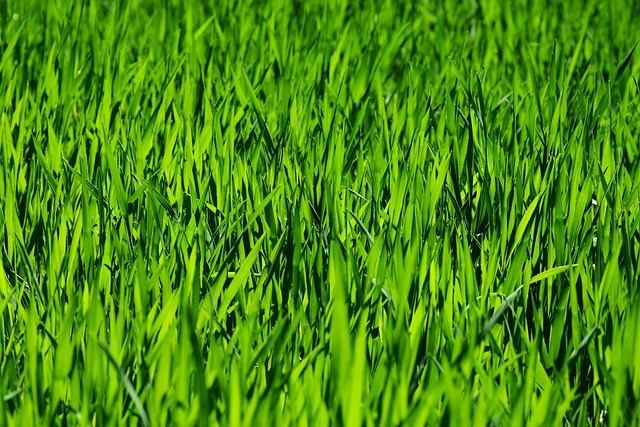Lawn Care and Landscaping involve careful management of soil health, grass selection, and seasonal fertilization to create a visually appealing and resilient outdoor space. Soil testing and amendments are necessary to ensure the right nutrient availability and pH levels for optimal grass growth. Aeration and overseeding help improve turf density and combat weeds. Selecting the appropriate grass species for your local climate is vital, as it affects year-round lawn health. Efficient irrigation systems should be paired with water conservation measures to minimize waste while maintaining a healthy lawn. Regular monitoring for pests and diseases, along with integrated landscaping strategies, contribute to both the aesthetics and functionality of your outdoor space. By considering factors like soil type, local weather patterns, and grass species, you can achieve a lush, sustainable lawn that enhances property value and complements your landscape. Strategic fertilization, including timing, composition, and method, is essential for supporting grass growth throughout the year, with tailored approaches for cool-season and warm-season grasses to ensure their health and vitality. Lawn Care and Landscaping practices, when informed and well-executed, lead to a thriving ecosystem that is both beautiful and environmentally sound.
Engage in a comprehensive exploration of lawn care and landscaping with our detailed guide on mastering turf management. From the foundational principles that underpin a thriving lawn to the advanced techniques employed by professionals, this article delves into the nuances of maintaining a vibrant turf. Discover how soil health, strategic fertilization, and effective irrigation systems form the backbone of year-round greenness. Learn about the importance of aeration, overseeding, and managing thatch to bolster your lawn’s resilience. Explore organic practices for sustainable care, and understand the critical role of landscape design in enhancing both curb appeal and functionality. With a focus on seasonal maintenance, integrated pest management, disease prevention, and leveraging technology, this article equips you with the knowledge to transform your lawn into a lush, healthy oasis. Whether you’re a seasoned turf manager or a novice homeowner, these insights will elevate your lawn care and landscaping skills.
- Understanding the Basics of Turf Management for Optimal Lawn Care
- Key Factors Influencing Grass Type Selection for Different Climates
- The Role of Soil Health in Maintaining a Vibrant Lawn
- Strategic Fertilization: Timing and Types for Year-Round Greenness
Understanding the Basics of Turf Management for Optimal Lawn Care

Engaging in lawn care and landscaping requires a solid grasp of the fundamentals of turf management. A well-maintained lawn serves as a visual delight and can significantly enhance the aesthetic appeal of any property. Turf management encompasses various practices aimed at fostering a healthy, resilient turf. At the heart of effective lawn care is understanding soil composition and its impact on turfgrass growth. Soil testing and amendment are crucial for ensuring nutrient availability and proper pH levels, which in turn support the vigor of the grass. Regular aeration and overseeding are also key strategies to maintain turf density and reduce weed encroachment.
Moreover, selecting the appropriate grass species for your region’s climate is essential for year-round lawn health. Irrigation systems should be optimized to deliver water efficiently without waste, considering local water conservation practices. Pest and disease management requires vigilance; timely interventions can prevent widespread turf damage. Finally, integrating lawn care with broader landscaping efforts can create a cohesive and harmonious outdoor environment. This holistic approach ensures that each component of the landscape complements the other, leading to an overall thriving ecosystem. By adhering to these principles of turf management, homeowners and landscapers alike can achieve optimal results in lawn care, contributing to the beauty and functionality of outdoor spaces.
Key Factors Influencing Grass Type Selection for Different Climates

When cultivating a resilient and thriving lawn, selecting the appropriate grass type for one’s local climate is pivotal. Lawn Care and Landscaping professionals emphasize that the choice of grass variety should be informed by several key factors to ensure optimal growth and maintenance. Climate plays a decisive role; understanding the region’s temperature extremes, precipitation patterns, and sunlight exposure is essential. Warm-season grasses, such as Bermuda, Zoysia, and St. Augustine, thrive in hotter climates with long summers, requiring less water and more direct sunlight. In contrast, cool-season grasses like Kentucky bluegrass and fescues prosper in areas with milder temperatures and higher humidity, often experiencing harsher winters. These grasses are better suited to regions with defined spring and fall seasons, where the soil temperature is a critical determinant of their growth patterns.
In addition to climate, soil type and pH levels also significantly influence grass type selection. A well-drained, loamy soil is favorable for many turfgrass species, but some native to sandy soils may not perform well in clay-rich environments. The soil’s pH can affect nutrient availability and the grass’s overall health; most cool-season grasses prefer a slightly acidic soil, while warm-season varieties often favor neutral to slightly alkaline conditions. Lawn Care and Landscaping experts advise conducting a thorough site analysis, including a soil test, to guide the selection process. This analysis will inform the choice of grass type that will not only withstand the local climate but also complement the existing environmental conditions, ensuring a lush, durable lawn that requires minimal maintenance.
The Role of Soil Health in Maintaining a Vibrant Lawn

A thriving lawn is a reflection of the underlying soil’s health, a principle that underscores the importance of informed lawn care and landscaping practices. Soil health is pivotal in supporting plant growth; it encompasses soil structure, composition, biological activity, and moisture retention capacity. Adequate aeration, which allows air and water to penetrate the soil, promotes root development and overall lawn vigor. The balance of beneficial microorganisms, fungi, and bacteria within the soil is crucial for nutrient cycling, ensuring that vital elements like nitrogen, phosphorus, and potassium are available to your grass. Regular soil testing can inform gardeners of pH levels and nutrient deficiencies, guiding them to apply appropriate fertilizers and amendments to maintain optimal growing conditions. Effective lawn care and landscaping strategies therefore begin with a comprehensive understanding of the soil’s properties, as this forms the foundation for cultivating a lush, resilient lawn that can withstand environmental stressors and contribute positively to biodiversity. Landscapers and turf managers who prioritize soil health are more likely to achieve and maintain a high-quality turf that is both aesthetically pleasing and environmentally sustainable.
Strategic Fertilization: Timing and Types for Year-Round Greenness

Maintaining year-round greenness in a lawn requires a strategic approach to fertilization, a key component of effective lawn care and landscaping practices. The timing of fertilization applications is critical; they should align with the growth patterns of grass species prevalent in the region. For cool-season grasses, which thrive in temperate climates, early fall and late spring are optimal times for fertilization to promote root development and recovery from summer stress. Conversely, warm-season grasses, commonly found in subtropical and tropical regions, benefit from fertilization in late spring through summer, as they experience their peak growth during these warmer months.
The types of fertilizers used are equally important. A balanced N-P-K (nitrogen, phosphorus, and potassium) ratio is the cornerstone of lawn care and landscaping fertilization strategies. Slow-release formulations can provide a steady supply of nutrients over time, reducing the need for frequent applications. Additionally, incorporating organic options like compost or fish emulsion can enrich the soil and support a healthy microbial community beneath the turf. A comprehensive lawn care and landscaping program should include a variety of fertilization techniques to address seasonal changes and ensure that the grass receives all necessary nutrients for a lush, green appearance throughout the year.
In concluding our exploration of turf management, it’s clear that a robust understanding of these key areas—from selecting the right grass types for your climate to understanding the intricacies of soil health and strategic fertilization—is fundamental to achieving a lush, thriving lawn. Lawn care and landscaping go beyond mere aesthetics; they encompass ecological stewardship and community well-being. By applying the insights discussed in ‘Understanding the Basics of Turf Management for Optimal Lawn Care,’ ‘Key Factors Influencing Grass Type Selection for Different Climates,’ ‘The Role of Soil Health in Maintaining a Vibrant Lawn,’ and ‘Strategic Fertilization: Timing and Types for Year-Round Greenness,’ homeowners and professionals alike can cultivate green spaces that are both beautiful and sustainable. The science of turf management is a blend of art and science, requiring careful planning and attentive maintenance to ensure the best results. With these principles in mind, anyone can elevate their lawn care and landscaping to new heights.
